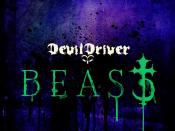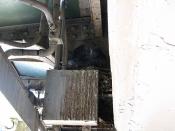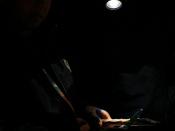Devil of Decay
In the "Lord of the Flies" by William Golding, several boys get themselves stranded on a deserted island. Upholding English etiquette, the boys act proper for a while, until the thought of a beast is brought up by a little kid. Ralph, the elected leader of the boys, dismisses this beast. Simon, the intellectual and receptive boy, has his own notions about the beast. In the chapter "Beast from Air", Ralph calls a meeting. In this chapter, the boy's true colors shine through and the beast comes out. The beast, in fact, is the devil that is slowly decaying the boys and that would have led them to their destruction.
The way Golding describes everything about the boys gives a feeling of crookedness and decay. As the boys are assembling, Golding writes, "The place of assembly in which he stood was roughly a triangle; but irregular and sketchy, like everything they made" (77).
This shows the crudeness and general disorganization of the group of boys. This also portrays the image of something decaying, crooked and leaning over to one side. This line alone shows that the devil of decay is already taking a bite of the boys, as they are becoming more and more uncivilized. Of course, some are much more uncivilized than others.
In many ways, Jack represents the decay and rotting inside the boys. Although he didn't believe in the beast at first, in this chapter he feels the beast is something they can hunt and kill. He is destructive, breaks the codes of society, and is very aggressive. He is the only who keeps disobeying the rule of the conch and that only the holder can speak. This represents his decay and also the degeneration of other boys. As are savages,



A very impressive essay.
Best essay I've read so far that's less than 1000 words. Usually for the longer essays, I get bored and stop reading it. But good job. This is a really good essay for its length.
0 out of 0 people found this comment useful.